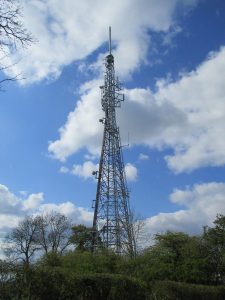
Freeview television channels are broadcast in a way which allows multiple channels to share a single frequency, in what is know as a multiplex.
Each multiplex, or group of channels, usually consists of around 10 to 15 television channels, depending on picture quality and broadcast hours. Additional radio and data services may also be broadcast, along with portals to services streamed on devices connected to the internet.
Public Service Multiplexes
There are 3 public service broadcaster (PSB) multiplexes in the UK, and these are carried on every TV transmitter in the UK. BBC A is used exclusively for BBC TV and radio services, whilst BBC B carries high definition (HD) services from the BBC, ITV, Channel 4 and Channel 5, along with an additional standard definition channel. BBC B is a T2 multiplex, meaning Freeview HD equipment is required to view these channels. The D3 & 4 multiplex is jointly owned by ITV and Channel 4, each utilising 50% of the available capacity. Channel 5 rents space from ITV.
Commercial Multiplexes
There are also 3 commercial multiplexes. These broadcast a variety of TV and radio services such as Dave, QVC, and Yesterday. SDN is owned by ITV, and transmitter provider Arqiva own Arqiva A and Arqiva B. These have a lower coverage area than the PSB multiplexes.
There were also two temporary multiplexes Com 7 and Com 8. Com 8 closed in June 2020. Both used the newer T2 standard, so Freeview HD equipment is required to view these services, although not all channels are in HD. Both are gradually being withdrawn as a result of a clearance of frequencies to allow for 5G mobile phone networks. Com 7 currently covers around 70% of the population.
Local Multiplexes
Comux is the transmitter provider for local TV channels such as Tyne and Wear TV, That’s TV, Notts TV, and London Live. This is owned by the local TV channels themselves, with profits from renting out spare capacity being re-invested into the transmitter network and the local channels.
There is also a Greater Manchester multiplex which was set up to allow Channel M to broadcast digitally. Channel M is now defunct, but the multiplex remains and transmits a small number of additional services to the Manchester area.
An additional multiplex for Northern Ireland allows RTÉ One, RTÉ Two and TG4 to be broadcast from the Republic of Ireland. Radio service RTÉ RnaG also broadcasts on the Northern Ireland multiplex.
Summary Table
| Operating Name | Multiplex Name | Coverage Area |
| PSB1 | BBC A | 99% of UK |
| PSB2 | D3&4 | 99% of UK |
| PSB3 | BBC B | 99% of UK |
| COM4 | SDN | 90% of UK |
| COM5 | Arqiva A | 90% of UK |
| COM6 | Arqiva B | 90% of UK |
| COM7 | N/A (temp. multiplex) | 65 to 70% of UK |
